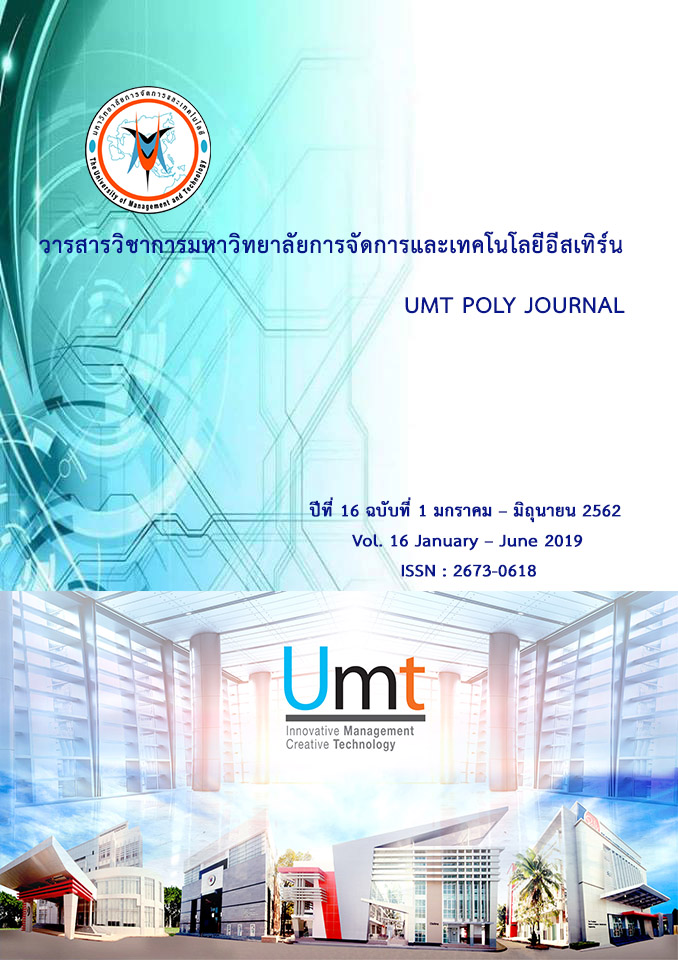Conservation of the Thai fiddle strings making by Manut Suriyarungsee
Keywords:
Thai fiddle strings making, Manut Suriyarungsee, Thai Instrument Artisan of Phra Nakhon Si AyutthayaAbstract
The objective of this research were to study 1) Artisan Manut Suriyarungsee’s biography and his past crafts 2) Thai fiddle strings making by Manut Suriyarungsee. This research was based on the Qualitative Research method having Manut Suriyarungsee who is an artisan Thai instrument crafter in Phra Nakhon Si Ayutthaya province as the subject. The research tool was the Interview Form. The data were analyzed based on the Content Analysis method. Research results revealed that 1) Artisan Manut Suriyarungsee was born on 28th January 1961 at 78/18 Mu 9, Ban Pom, Phra Nakhon Si Ayutthaya District, Phra Nakhon Si Ayutthaya Province. Mr.Manut Suriyarungsee is now at the age of 57 and crafts Thai instruments such as Thai Fiddle, Saw Duang and Saw U, as his main profession. Back when Manut was an employee, he inherited the crafting methods from Mr.Somporn Nuamravi, the owner of Sangkeetpradit. Later on, Manut started his own business when he was 25 and continued to this day. His praised works would be receiving the First Runner-Up price in the Community Product Contest and registering as an OTOP Entrepreneur of Phra Nakhon Si Ayutthaya District Product Category: Decoration & Souvenir (Saw Duang/Saw U) 2) Thai fiddle strings making is divided into 4 steps. Step 1: Silk Spinning (Kraw Mhai) - The silk is first selected from batches of Chinese Silk. It is then inserted into the Silk Spinner. Step 2: Thread Running (Doen Mhai) - The reel of silk from the first step is processed through the Silk Spinner and combined with the Silk Hauling method (Doen Saow Mhai). The size of the string is determined by the number of reels used, for example, the Saw Duang’s Ekk String uses 8 reels, Saw U’s Tum String uses 10 reels, Saw U’s Ekk String uses 15 reels, Saw U’s Tum String uses 19 reels, Saw Sam Sai’s Ekk String uses 8 reels, Saw Sam Sai’s Klang String uses 14 reels while Saw Sam Sai’s Tum String uses 20 reels. Step 3: Applying Glue (Ta Kaow) - The processed glue combined with clothing dye (Luang Kae color) is brushed on the silk. Step 4: Thread Stranding (Khwan Kleaw Mhai) - The thread of silk are stranded for strength and tightness. With the experience of artisan Manut Suriyarungsee, his process of creating fiddle strings are delicate and unique. It requires extraordinary craftsmanship and expertise to create. Conserving and passing on this knowledge to later generations is well deserved. It will encourage Thai people’s Life Long Learning process in a way which connects to the Local Wisdom.
Downloads
References
วัชรพล คงอุดมสิน. (2560). กรรมวิธีการสร้างซอด้วงของครูประสิทธิ์ ทัศนากร. วิทยานิพนธ์ศิลปศาสตรมหาบัณฑิต สาขาวิชาดุริยางค์ไทย ภาควิชาดุริยางคศิลป์ จุฬาลงกรณ์มหาวิทยาลัย.
สุกรี เจริญสุข. (2546). เสียงและระบบเสียงดนตรีไทย. มปท.: มปพ.
ชนะชัย กอผจญ. ครูชำนาญการ กลุ่มสาระการเรียนรู้เครื่องสายไทย วิทยาลัยนาฏศิลป สถาบันบัณฑิตพัฒนศิลป์ กระทรวงวัฒนธรรม. (6 ตุลาคม 2561). สัมภาษณ์.
บรรเลง พระยาชัย. ครูชำนาญการ กลุ่มสาระการเรียนรู้เครื่องสายไทย วิทยาลัยนาฏศิลปจันทบุรี สถาบันบัณฑิตพัฒนศิลป์ กระทรวงวัฒนธรรม. (13 ตุลาคม 2561). สัมภาษณ์.
มณฑา ศิลปรายะ. ผู้เชี่ยวชาญดนตรีไทย มหาวิทยาลัยเทคโนโลยีราชมงคลธัญบุรี. (11 ตุลาคม 2561). สัมภาษณ์.
Downloads
Published
Issue
Section
License
ประกาศลิขสิทธิ์
เนื้อหาและข้อมูลในบทความที่ลงตีพิมพ์ในวารสารวิชาการมหาวิทยาลัยการจัดการและเทคโนโลยีอีสเทิร์น ถือเป็นข้อคิดเห็นและความรับผิดชอบของผู้เขียนบทความโดยตรง ซึ่งกองบรรณาธิการวารสารไม่จำเป็นต้องเห็นด้วยหรือร่วมรับผิดชอบใด ๆ
บทความ ข้อมูล เนื้อหาหรือรูปภาพ ฯลฯ ที่ได้รับการตีพิมพ์ในวารสารวิชาการมหาวิทยาลัยการจัดการและเทคโนโลยีอีสเทิร์น ถือเป็นลิขสิทธิ์ของวารสารวิชาการมหาวิทยาลัยการจัดการและเทคโนโลยีอีสเทิร์น หากบุคคลหรือหน่วยงานใดต้องการนำข้อมูลทั้งหมดหรือบางส่วนไปเผยแพร่ต่อหรือเพื่อกระทำการใด ๆ จะต้องได้รับอนุญาตเป็นลายลักษณ์อักษรจากวารสารวิชาการมหาวิทยาลัยการจัดการและเทคโนโลยีอีสเทิร์นก่อนเท่านั้น




